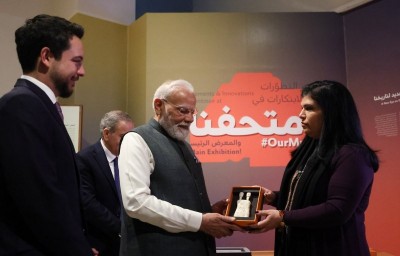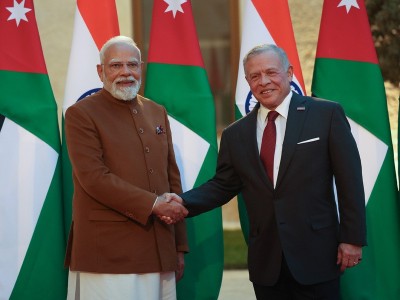Modi to launch new scheme for village development
The goal is to develop three Adarsh Grams or model villages by March 2019, of which one would be achieved by 2016. Thereafter, five such Adarsh Grams (one per year) will be selected and developed by 2024. The Project to be launched on the occasion of birth anniversary of Lok Nayak Jai Prakash Narayan aims to keep the soul of rural India alive while providing its people with quality access to basic amenities and opportunities to enable them to shape their own destiny. Inspired by the principles and values of Mahatma Gandhi, the Scheme places equal stress on nurturing values of national pride, patriotism, community spirit, self-confidence and on developing infrastructure.
The Scheme is unique and transformative as it has a holistic approach towards development. It envisages integrated development of the selected village across multiple areas such as agriculture, health, education, sanitation, environment, livelihoods etc. Far beyond mere infrastructure development, SAGY aims at instilling certain values, such as people’s participation, Antyodaya, gender equality, dignity of women, social justice, spirit of community service, cleanliness, eco-friendliness, maintaining ecological balance, peace and harmony, mutual cooperation, self-reliance, local self-government, transparency and accountability in public life, etc., in the villages and their people so that they get transformed into models for others.
The Members of Parliament (MPs) are the pivots this Scheme will run on. Gram Panchayat would be the basic unit for development. It will have a population of 3000-5000 in plain areas and 1000-3000 in hilly, tribal and difficult areas. In districts where this unit size is not available, Gram Panchayats approximating the desirable population size may be chosen. If each MP adopts three villages, the scheme will be able to develop 2,379 `gram panchayats` over the next five years. The Lok Sabha has 543 MPs and the Rajya Sabha 250, 12 of which are nominated. The MP would be free to identify a suitable gram panchayat for being developed as Adarsh Gram, other than his/her own village or that of his/her spouse. There are 2,65,000 gram panchayats in India.
The scheme will be implemented through a village development plan that would be prepared for every identified gram panchayat with special focus on enabling every poor household to come out of poverty. The constituency fund, MPLADS, would be available to fill critical financing gaps. The planning process in each village will be a participatory exercise coordinated by the District Collector. The MP will play an active facilitating role in this exercise.
SAGY gives focus to community participation. Social mobilization of village community can trigger a chain of other development activities in the village. For instance, reducing risk behaviours like alcoholism, smoking, substance abuse (drugs/tobacco/gutkha etc) among all age groups of population. Strengthening of local democracy through strong and transparent Gram Panchayats and active Gram Sabhas and facilitating good governance is also an important objective of SAGY. Women participation in the decision-making process will be encouraged. In fact the Scheme envisages holding Mahila Sabhas and Bal Sabhas to discuss women and children specific issues and concerns. E-governance will also be given a push.
Ensuring universal access to education facilities, adult literacy, e-literacy are also important goals of SAGY. Apart from education, these villages will have quality health care. The outcomes will include 100% immunization, 100% institutional delivery, reduced IMR, MMR, reduction in malnutrition among children etc. Adoption and adaptation of technology and introduction of innovations are critical to this programme. This will include use of space application and remote sensing for planning, mobile based technology for monitoring, agriculture technology for increasing productivity etc.
At the national level, a separate, real time web based monitoring system will be put in place for the scheme covering all aspects and components. The Ministry will put in place a specially designed capacity building programme for Government functionaries at different levels including Gram Panchayats. At the state level there will be an Empowered Committee headed by the Chief Secretary consisting of the relevant Departments and including experts, as required with at least two Civil Society representatives. The district Collector will be the nodal officer for implementing the SAGY. He will conduct a monthly review meeting with representatives of the participating Line Departments. The Members of Parliament concerned will chair the review meetings. The rural development ministry has made grand plans for its launch, inviting all 750-odd MPs to the event to be presided over by the PM. The Rural Development Minister Nitin Gadkari and the Minister of State for Rural Development Upendra Kushwaha will address the gathering on the occasion.
Support Our Journalism
We cannot do without you.. your contribution supports unbiased journalism
IBNS is not driven by any ism- not wokeism, not racism, not skewed secularism, not hyper right-wing or left liberal ideals, nor by any hardline religious beliefs or hyper nationalism. We want to serve you good old objective news, as they are. We do not judge or preach. We let people decide for themselves. We only try to present factual and well-sourced news.






